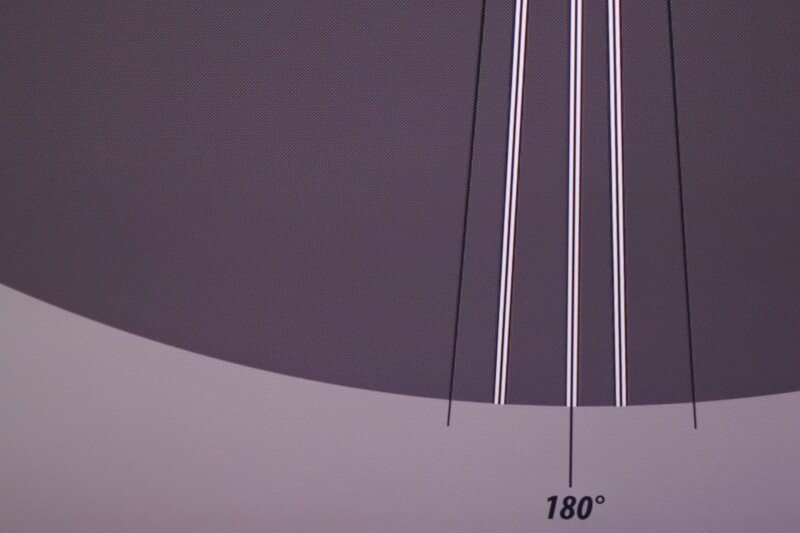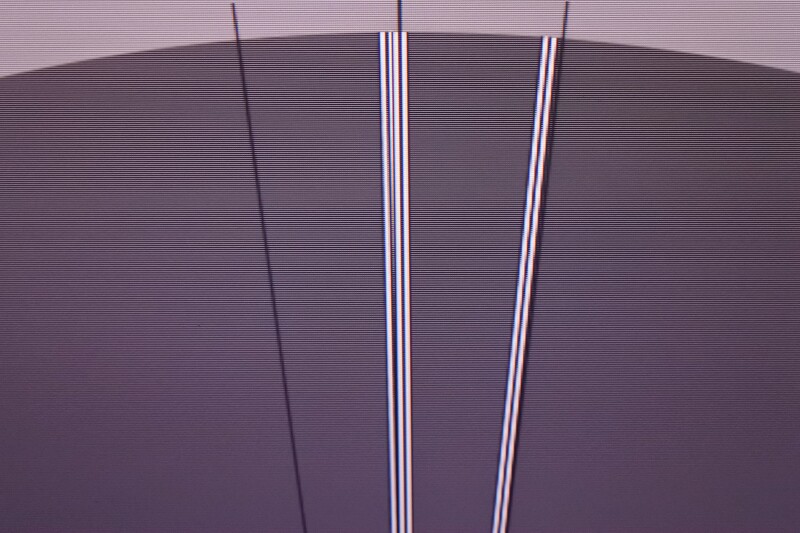The 8K Display Summit held June 11 at the Millenium Times Square Hotel had 14 speakers and a presentation of content that was deep, broad, and frequently insightful. In yesterday’s DD, my colleague Matt Brennesholtz focused on the content devoted to 8K content production.

In today’s DD, I will focus on a big idea: 8K is not just about quadrupling the number of pixels in UHD; it is the vehicle for a new level of image perception, some aspects of which are not measurable in traditional ways (at least not yet). I will make use of quotes from the speakers to present this case, and I reserve the right to toss in quotes that are just plain interesting even if they are not closely related to the theme.
The theme was established early when Mauricio Alvarez-Mesa (CEO of Spin Digital) quoted Sony’s T. Ogura:
“Large color volume with higher peak luminance and 8K for smooth gradation realizes a very realistic picture. Non-numerical picture information: realness and immersion.”
But before you get to the idea of non-numerical picture information, you have to dispose of the widely held misconception that the difference between 8K and 4K (and 2K) cannot be seen at normal viewing distances. I’ve been addressing this for years, but Florian Friedrich (Principal, FF Pictures) did it very effectively in only a few slides.
Friedrich: “Some people say you need to sit 60 cm away from a 65-inch TV in order to see the resolution of 8K. Some people say you need binoculars at normal viewing distances to see a benefit compared to 4K or even Full HD. Both are terribly wrong. I knew I had to go after these prejudices, because the prejudices fundamentally conflicted with what I could see.”
“Average Human Visual Acuity is being able to separate objects at 1 arc minute (1/60°) distance. That is about 3mm from 10- meters away. [This leads to the] common miscalculation FOV°/(Visual Acuity°) = required horizontal display resolution. So, for a normal TV viewing distance of 2.5H [picture heights] this would mean 44.4/(1/60) = 2664 horizontal pixels. [Two obvious problems with] this analysis are that the diagonal spacing is greater than the horizontal or vertical spacing, [and] if objects don’t fall precisely into the pixel grid, they are undersampled.” According to the Nyquist sampling theorem, a signal must be sampled at twice the highest frequency contained in the signal. By incorporating a 1.41 factor for diagonal spacing and a Nyquist factor of 2 in the equation, we get a required horizontal resolution at 2.5H of 7512 pixels if we are to avoid artifacts. That is 8K.
Friedrich did not mention that human vernier resolution — the ability to detect slight misalignment in two line segments — is ten times more sensitive than standard visual acuity as measured by the classic Snellen chart or one of its variants. It is this exquisite sensitivity that makes it possible to see very slight aliasing or “jaggies.” In the demo area, a test pattern showed that an 8K set virtually eliminated aliasing, while a 4K set showed obvious aliasing at normal viewing distances and greater.
INTERESTING QUOTE #1 (Bill Mandell, Samsung):
The Galaxy S10 shows cinema in HDR10+
Phil Holland, PHFX.com.
“With 8K, a TV can be barrier-free. Nothing stands between the viewer and the content. With mass TV sets, it takes a while for viewers to get immersed in the content.”
Holland created the short film “Quantum Flow” with Nanosys for introduction at this conference, which was shown on a Samsung Q900 TV in the demo space. The film shows viscous quantum-dot inks dripping, flowing, and performing a variety of tricks limited only by Holland’s imagination. Nanosys provided air-stable quantum dots with BT.2020 color coordinates, which makes the film an excellent test vehicle for color volume. You can see the film at https://www.youtube.com/watch?v=sKFMgVfh2eM&feature=youtu.be, but it won’t look the way Holland intended if you don’t have a high-color-volume display.
INTERESTING QUOTE #2 (Endo):
In Japan, only Sharp is selling consumer 8K TVs. NHK has set up viewing stations in public places. They shoot 8K with 22.2 channel surround sound (although not with 22 microphones). The system is demonstrated with 24 speakers.
In a panel session, Mauricio Alvarez-Mesa noted that people are starting to measure realism, comparing an 8K image with the real object. At what distance does the 8K image look real? Holland expanded on the idea.
“We want to remove the digital fingerprint from the image. We want to create a situation in which the viewer jumps right into content and doesn’t interact with the screen.”
Mandell tossed some cold water on the proceedings:
“It will be years before most TVs exceed 10 bits.”
Endo returned to the positive with “8K grows your brain cells.” I don’t know if he intended that literally, but it sure sounded good.
Sonia Chen of Samsung Display Company was asked if there will there be QD-OLED production in 2020. Her answer: “Optimistically, yeah.”
Jason Hartlove of Nanosys observed that BT.2020 requires primaries with with a very narrow spectrum of 1nm FWHM (full width at half maximum) or so. Quantum dots are now at about 20nm. P3 is approximately 74% of BT.2020. Forthcoming sets will be rated at 80% of BT.2020, 90% of BT.2020, etc.
INTERESTING QUOTE #3 (Mark Henninger, AVS Forum):
“The AVS audience will probably retire projectors for home theater as 85-inch becomes affordable.”
A very interesting and unexpected presentation came from YungKyung Park, a professor in the Graduate School of Color Design at Ewha Womans University (Seoul, Korea), and Director of Color Design Research at the university. (Ewha is the largest women’s university in the world and is among the most selective universities in Korea.) Previously, Park worked as a senior engineer for Samsung Electronics’ LCD Division, where she did research on image quality and color appearance. Park received her doctorate in color science from the University of Leeds.
In “Hyper-realism Image Quality in Full Ultra High-Definition 8K,” Park reported on a subjective image quality study that compared a variety of images in 4K and 8K, and concluded “that there are perceptual and cognitive characteristics that can be demonstrated in image quality above 8K. When compared with 4K, the image quality above 8K was accompanied by “Mach band effect,” which in turn improved the understanding of the main object.”
Park expanded upon Ogura’s previously idea that there is non-numerical picture information in 8K that is readily observed. In answer to a question, Park said her observers were convinced that a woman’s face in one of the test images was brighter was brighter and redder in 8K than in 4K, but measurements showed the images to have the same color and luminance.
This is exciting if you’re a researcher in perception and cognition. It’s downright scarey if you create content or make high-end TV sets because you are faced with the challenge of ensuring perceptual fidelity at 4K and 8K, even if that requires supplying different measurable characteristics to produce similar impressions of luminance and chromaticity. I look forward to more from Professor Park, and to seeing other researchers reproduce and expand upon her results.
Insight Media and Samsung produced a superior one-day symposium. I look forward to next year’s edition. (KW)
Ken Werner is Principal of Nutmeg Consultants, specializing in the display industry, manufacturing, technology, and applications, including mobile devices, automotive, and television. He consults for attorneys, investment analysts, and companies re-positioning themselves within the display industry or using displays in their products. He is the 2017 recipient of the Society for Information Display’s Lewis and Beatrice Winner Award. You can reach him at [email protected] or www.nutmegconsultants.com.
 Yes, Virginia. You can see differences between 4K and 8K at normal viewing distances. The upward-reaching diagonal is at 4K; the downward-reaching diagonals are at 8K. These photos were taken at closer-than-normal viewing distances, but the aliasing effect at 4K was clearly visible at normal viewing distances. (Photos: Ken Werner) Click for higher resolution
Yes, Virginia. You can see differences between 4K and 8K at normal viewing distances. The upward-reaching diagonal is at 4K; the downward-reaching diagonals are at 8K. These photos were taken at closer-than-normal viewing distances, but the aliasing effect at 4K was clearly visible at normal viewing distances. (Photos: Ken Werner) Click for higher resolution


